1. Antiadrenergic Alpha and Beta Blockers
1.1. Important Beta Blockers LOL's
1.1.1. Atenolo
1.1.1.1. Tenomim
1.1.1.1.1. Beta1 selective (Cardio Selective)
1.1.1.1.2. Force of contraction which |the Load in the Heart
1.1.2. Proponolo
1.1.2.1. Cause BP
1.1.2.2. Hydrochroride
1.1.3. Metropolo
1.1.3.1. lopressor
1.1.4. timolol
1.1.4.1. Blocadren
1.1.4.1.1. eye drop glaucoma
1.1.5. Setanlol
1.1.5.1. HR
1.2. Used to treat
1.2.1. Tachyarrhythmias
1.2.1.1. slow ventricular response
1.2.2. Angina pectoris
1.2.2.1. decrease in HR, BP
1.2.3. Glaucome
1.2.3.1. Reduce IOP eye have beta receptors
1.3. Side Effects
1.3.1. Bradycardia
1.3.2. hypotension
1.3.3. bronchopasm
2. Sympathomamemic Adrenergic Agonists
2.1. Epinephine
2.1.1. Use in case of cardiac arrest, or allergic reaction * Obstruction of Air way
2.1.1.1. Nursin implications
2.1.1.1.1. Asses
2.1.1.1.2. Implement/ Teach
2.1.2. adrenaline
2.1.3. Action:Stimulates Alphaand Beta adrenergic receptors
2.1.4. Contraindication:
2.1.4.1. hypersensitivity
2.1.5. A/e Restless, arrhythmia, Tachy HTN
2.2. GI, Saliae, urinary
3. Anticholinergics drugs
3.1. Pyridostigmine
3.2. Atropine
3.2.1. action
3.2.1.1. Competitively antagonizes the action of acetycholineagonist and muscaric receptors.
3.2.2. Indications
3.2.2.1. Sympatomatic bradycardia
3.2.2.2. Reduction of secretion and blockage of cardial vagal reflexes
3.2.2.3. Treatment of peptic ulcer
3.2.2.4. monitor for adverse reaction
3.2.2.5. Functional GI disorder
3.2.3. Nursing considerations
3.2.4. Monitor for adeverse reaction
3.2.4.1. headache
3.2.4.2. Tachycardia
3.2.4.3. restless
3.2.4.4. Diziness
3.2.4.5. blurried vision
3.2.4.6. Tachycardia
3.3. belladonna
3.4. rivastigmine
3.5. Bethananecol
3.6. contraindications
3.6.1. Glaucoma
3.6.2. Myasthemia Gravis
3.6.3. reflux esophagitis
3.6.4. GI obstructive Disease
3.7. Increase secretion See, Spit and shit
4. Parasympathomemic Cholinergic effect
4.1. Important Cholinergics
4.1.1. Atropine
4.1.2. hyscine
4.1.3. benztropine
4.1.4. Fla
4.2. HR
4.3. GI,
4.4. Secretion, GI And Salivatory glands
4.5. respiratory secretion
4.6. Constriction of pupils
4.7. Contraindications
4.7.1. GI
4.7.2. Asthma
4.7.3. CAD
4.8. Ad/e
4.8.1. Cramp
4.8.2. diarrhea
4.8.3. excessive salivation
4.8.4. muscle weakness
4.8.5. Diff. breathing
4.9. Nursing Implications
4.9.1. Assess
4.9.1.1. Disease specific
5. SNS Fight and Flight
5.1. Alpha
5.1.1. Alpha1 Receptores
5.1.1.1. Vasoconstriction
5.1.1.2. Bp
5.1.1.3. contraction piloerection
5.1.1.4. Pupill dilation
5.1.1.5. Thickened Saliva Secretion
5.1.2. Alpha 2 Receptors
5.1.2.1. Vasoconstriction BP
5.1.2.2. BP
5.2. The Sympathetic response Perception of stress- Limbic system Flight and fight
5.2.1. Hypothalamus
5.2.1.1. ACTH
5.2.1.1.1. Cortisol
5.2.1.1.2. Aldosterone
5.2.1.2. TSH
5.2.1.2.1. Thyroid levels
5.2.1.2.2. Metabolism
5.2.1.3. SNS
5.2.1.3.1. BP, HR, RR, sweating
5.2.1.3.2. Bronchodilation
5.2.1.3.3. Pupil Dilation
5.2.1.3.4. Pilorection
5.2.1.3.5. Blood to Muscle
5.2.1.3.6. Sphincter Construction
5.2.1.3.7. Gi functiond
5.3. Beta receptors
5.3.1. Beta 1
5.3.1.1. Heart
5.3.2. Beta 2
5.3.2.1. 2 lungs
5.3.2.2. Perfusion open to Respiartory track| bhroncodilation
6. PNS "Rest and Digest"
6.1. Muscarinic receptors
6.1.1. Pupil Constriction
6.1.2. RR
6.1.3. Gi Mobility
6.1.4. Urinary Blader Contraction
6.1.5. Male erection
6.1.6. swetting
6.2. Nicotinic Receptors
6.2.1. Muscle contraction
6.2.2. Release of Noropinephrine from the adrenalmedula
6.2.3. Autonimic Ganglia stimulation
